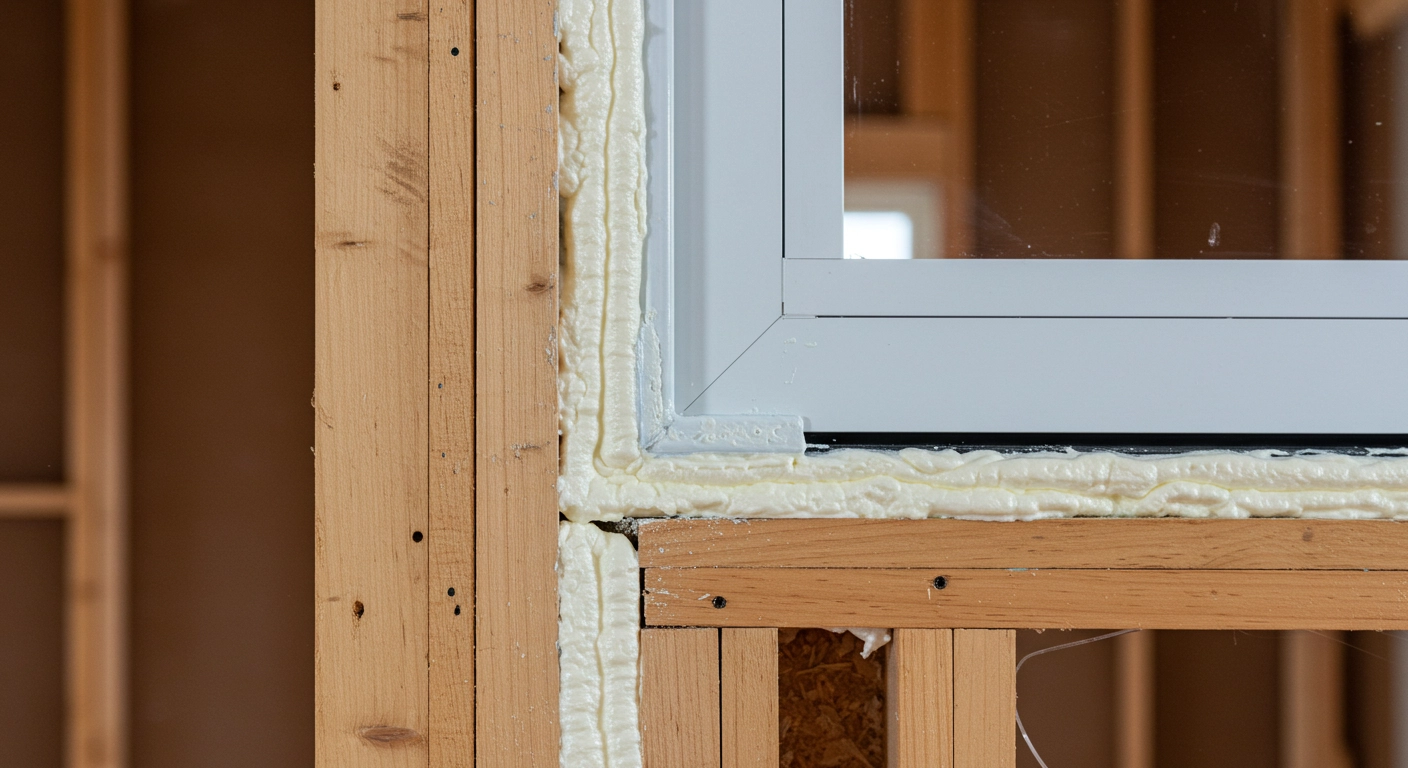Air sealing and insulation serve distinct but interdependent purposes. Home insulation resists heat transfer, while air sealing blocks uncontrolled airflow. Without air sealing, insulation performance drops due to convective heat loss and moisture transfer. The combination of both is necessary to improve energy efficiency, reduce HVAC load, and stabilize indoor conditions year-round.
Air leakage can bypass insulation, leading to cold drafts in winter and heat gain in summer. When installed together, air sealing prevents conditioned air from escaping and unconditioned air from entering, allowing insulation to function as intended. Buildings in high-humidity or extreme-temperature regions like Central Texas benefit especially from the combined approach due to fluctuating seasonal pressures and frequent moisture intrusion.
Stellrr applies air sealing and insulation together in most residential retrofits to ensure that building envelopes remain continuous, pressure-balanced, and resistant to heat, air, and moisture movement. The data below illustrates how each component performs alone and in combination.
Comparison of Air Sealing and Insulation Functions
| Feature | Air Sealing | Insulation | Combined Performance |
|---|---|---|---|
| Primary Function | Stops air movement | Slows heat transfer | Enhances both heat and air control |
| Common Materials | Caulk, spray foam, weatherstripping | Fiberglass, cellulose, foam | Integrated systems |
| Moisture Resistance | High (depends on sealant) | Varies (closed cell = high) | Improved when used together |
| Energy Savings Potential | 10-20% (source: DOE) | 15-30% (source: EPA) | 30-50% in optimized systems |
| Installation Scope | Joints, seams, penetrations | Wall cavities, attics, floors | Whole envelope |
| Measurable Air Leakage Drop | Yes | No | Yes |
Technical Performance Data
| Specification | Air Sealing | Insulation (varies by type) |
|---|---|---|
| Typical Air Changes Per Hour | Reduced from 7-10 ACH to <3 ACH | Not affected directly |
| R-Value Contribution | Negligible (air barrier only) | R-13 to R-49 depending on type |
| Water Vapor Barrier Potential | Yes (spray foam, tape) | Yes (closed-cell foam) |
| Thermal Bridging Reduction | No | Partial (depending on application) |
| Code Compliance Factor | Required by IECC | Required by IECC |
How Texas Climate Affects Air Sealing and Insulation
Central Texas homes face large temperature swings, high humidity, and intense solar radiation. Without proper air sealing, spray foam insulation alone can trap moisture and fail under pressure differentials. Wind-driven infiltration and stack effect are common here.
Bonus Tip: In hot climates, radiant heat entering through attics amplifies HVAC load. Sealing attic bypasses before insulating helps reduce this stress.
Spray foam is commonly used in Texas due to its dual role in insulation and air sealing. Open-cell foam allows vapor permeability in rooflines while maintaining airtightness. Closed-cell foam resists moisture, ideal for crawlspaces and rim joists.
Things to Consider Before Making a Decision
- Age of Home: Older homes typically leak more air through framing gaps and unsealed penetrations.
- HVAC Efficiency: Unsealed homes overwork HVAC systems, increasing energy costs.
- Material Compatibility: Not all insulation types can double as air barriers.
- Moisture Risk: Consider vapor drive and water migration, especially in basements and crawlspaces.
- Budget and ROI: Air sealing has faster payback due to immediate impact on comfort and utility bills.
Bonus Tip: Use blower door testing before and after sealing to quantify leakage reduction.
Stellrr Services That Address These Issues
- Open Cell Insulation: Offers thermal insulation and air barrier in attic rooflines; suited for interior applications.
- Closed Cell Insulation: Provides moisture control and air sealing in high-risk areas like crawlspaces and basements.
- Crawlspace Insulation: Controls moisture and air entry from below, preventing mold and structural damage.
- Insulation Removal: Clears degraded materials that compromise new air seal and insulation effectiveness.
Common Questions People Ask Before Choosing a Solution
Does air sealing make insulation unnecessary?
No. Air sealing improves the performance of insulation but does not replace it. Both are needed for full efficiency.
Should air sealing come before insulation?
Yes. Sealing gaps before adding insulation ensures full coverage and minimizes bypasses.
Is spray foam enough by itself?
Spray foam can handle both insulation and air sealing if applied at the correct thickness and in the right locations.
Can I do air sealing without removing old insulation?
Only if the existing insulation doesn’t block access to air leakage points. Otherwise, partial removal is often required.
Get Expert Insulation Guidance
Combine spray foam insulation with effective air sealing for a durable, efficient building envelope. For expert evaluation and material options that match Texas conditions:
Stellrr
Email: info@stellrr.com
Phone: (512) 710-2839
Frequently Asked Questions
How do I know if my home needs air sealing?
Look for drafts, uneven temperatures, high energy bills, or visible gaps around windows, doors, and baseboards.
How often should air sealing be inspected?
Inspect every 3-5 years or after significant home renovations or HVAC upgrades.
What types of sealants are most effective?
Closed-cell spray foam, silicone caulk, and weatherstripping tapes depending on the gap size and location.
Can air sealing reduce allergens or pollutants?
Yes. Blocking outside air helps reduce entry of dust, pollen, and outdoor pollutants.
Will air sealing increase indoor humidity?
Not if ventilation is managed. Balanced HVAC and controlled fresh air systems maintain healthy indoor air.

